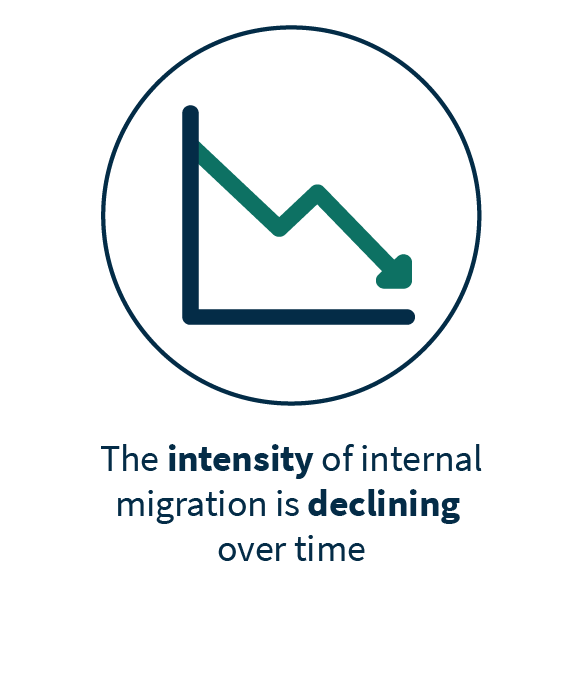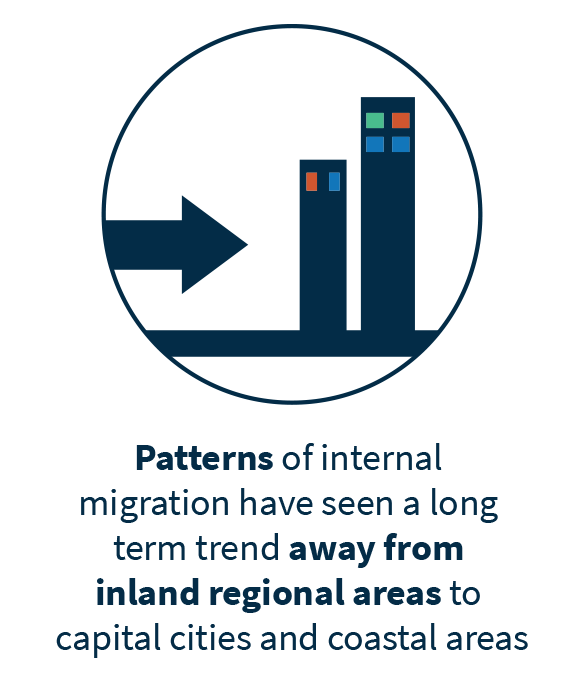What is internal migration?
Internal migration is the movement of people across a specified boundary within Australia involving a change in their place of usual residence. This can be within a state or territory, or even within a city.
Interstate migration specifically refers to the movement of people over a state or territory boundary involving a change in their place of usual residence.
Net internal migration (NIM) = Arrivals − Departures within a specified boundary.
Internal migration has three main dimensions
Level: how many people move
The level of internal migration is the overall number of people who move within Australia, which provides an insight of how mobile a population is, and whether population mobility has changed over time or in reaction to social and economic events.
Patterns: where people move to and from
The patterns of internal migration look at the spatial redistribution of the population, which provides insights into which areas are gaining people and which areas are losing people and informs population policy and planning.
Composition: who is moving
The composition of internal migration gives an insight into the characteristics of people who are moving, and includes characteristics such as age, sex, employment status, and life events such as family formation.


